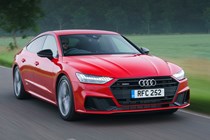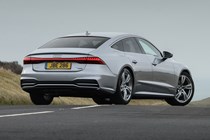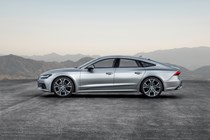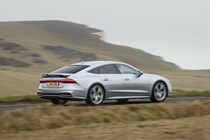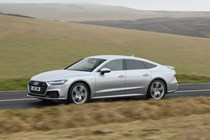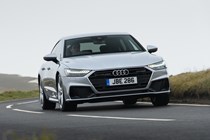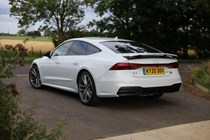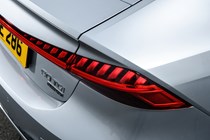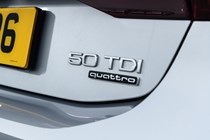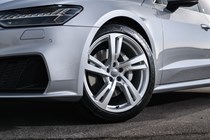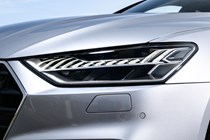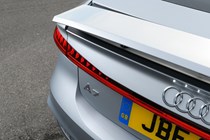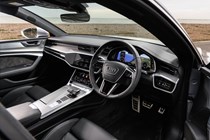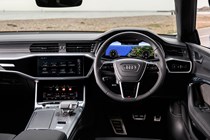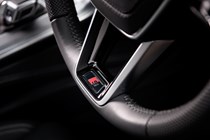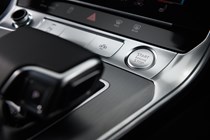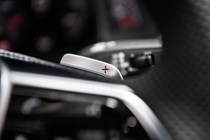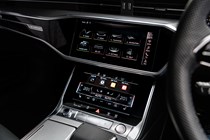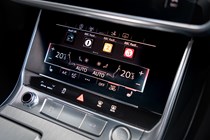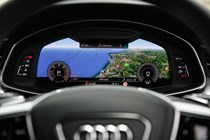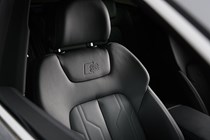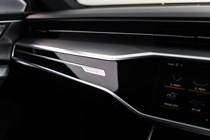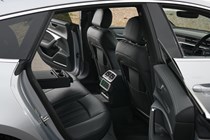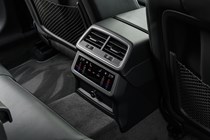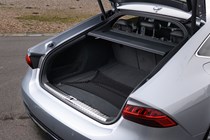Audi A7 engines, drive and performance
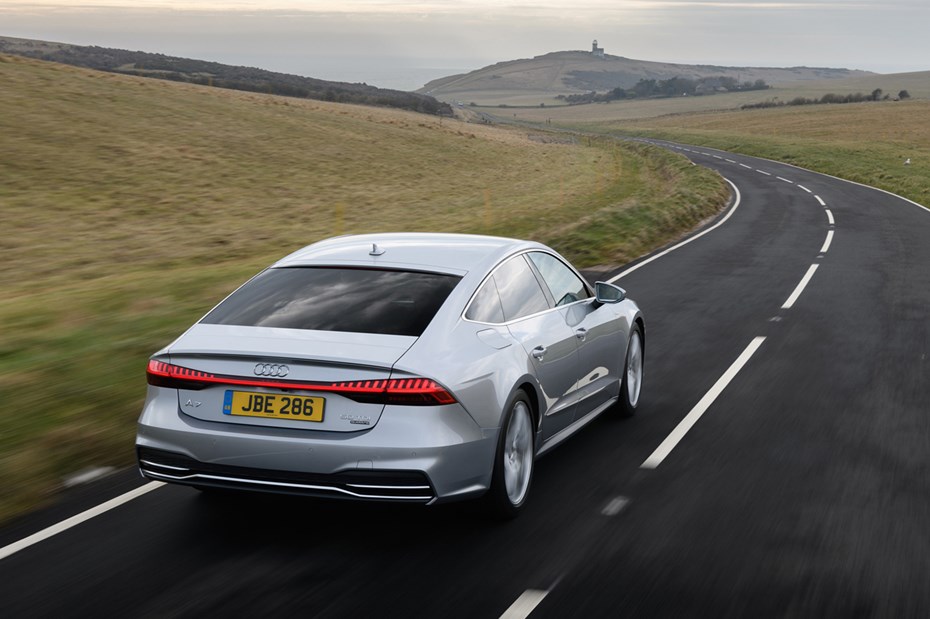
- One petrol, one plug-in hybrid, two diesels
- 286hp – 362hp
- Sporting model, called the S7, is unusually a diesel
Petrol engine
The 45 TFSI is a 2.0-litre, producing 245hp and 370Nm of torque. Standard Quattro all-wheel drive and a seven-speed S Tronic gearbox propel it from 0-62mph in 6.2 seconds, and it will go on to 155mph.
Despite the lack of size it has enough punch for day-to-day driving. It can feel a bit breathless compared with the diesels, but it’s a useful addition for people who don’t cover that many miles.
Diesel engines
The 45 TDI is also a 2.0-litre. It makes 200hp, 400Nm of torque and completes the 0-62mph sprint in 7 seconds. On paper it appears slower than the petrol, but in real-world conditions there’s not much in it.
On the move, it’s a refined engine unless you really push hard and rev it out to get up to speed. Then you’ll realise it’s a diesel (because of the noise), but otherwise it’s a smooth, hushed performer that hauls along the A7 with ease.
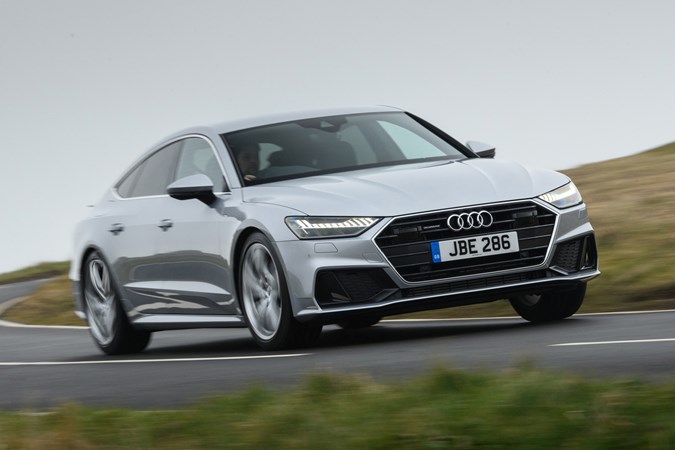
At the top of the diesel tree sits the S7. Under the bonnet you’ll find a 3.0-litre V6 making 349hp and 700Nm of torque, good for a 5.1-second 0-62mph time. This is the most muscular engine. There’s a wealth of pulling power in every gear and overtaking is done in seconds. There’s always enough power in reserve for whatever manoeuvre you have in mind.
Plug-in hybrid
The plug-in hybrid 55 TFSI e promises the smoothness and hushed tones of a petrol engine, with the MPG and pulling power of a diesel. Raw figures time: it’ll kick out 360hp and 500Nm of torque from its 2.0-litre petrol engine and battery combination.
The industry standard 0-62mph time is cracked in 5.7seconds – and it easily feels that fast. With the battery charged, the pace of the plug-in is prodigious. The 0-62mph time is pulse-racing, but the engine is more impressive on the move. Say, from 40-to 70mph – perfect for overtaking or joining motorways is where it’s most impressive. Just plant your right foot down and you’re catapulted away in near silence.
Even when the battery doesn’t have any charge in it, the 2.0-litre petrol has ample power on demand, although mpg really suffers.
What’s it like to drive?
- Firm ride with standard suspension
- Handles well with taut body control
- Automatic gearbox can be hesitant
The way the A7 handles hangs heavily on which model you go for, and whether you opt for any non-standard suspension and damping set-ups.
Base model A7s come with steel suspension, while higher-spec S Line cars come with 10mm lower suspension that has a noticeable impact on the way the car rides. It’s much firmer and it can feel a little fidgety, not helped by the large alloy wheels fitted as standard.
However, there are a few options to consider to sort this issue out. Adaptive suspension can be selected to configure the way it rides and handles, or you can opt for air suspension which improves things considerably. If you want the car to be floaty, it can deliver, but it can also be firmed up. It works well as the A7 has good body control in all set-ups.
Customers can also spec rear-wheel steering. It works by turning the rear wheels against the front ones at low speeds to boost manoeuvrability, while at higher speeds they go with the front wheels to make it more stable.
On a set of twisting turns, the A7 feels much more agile than its heft suggests, especially with rear-wheel steering. It can take a little getting used to, though, and you may find yourself turning into a corner a bit more enthusiastically than you might have originally anticipated.
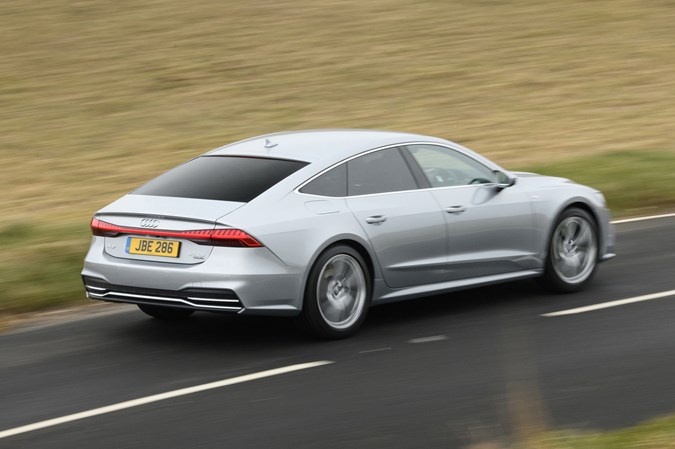
The steering doesn’t offer much in the way of feedback, no matter which driving mode you select. Most drivers will leave it in Comfort or Auto, making things nice and easy, but not so vague that it doesn’t fill the driver with confidence.
While the petrol engine and plug-in powertrains use a fast-shifting S Tronic dual-clutch transmission, the diesels feature an eight-speed torque converter auto.
We found that this gearbox can hold the car back in some situations – such as pulling away from junctions under partial throttle. Press harder and the A7 responds with a huge burst of speed, making it hard to find a comfortable middle ground.
On the move it seems to take its time to decide which gear to use and sometimes makes progress a little less smooth than you might expect from a big barge like the A7.


